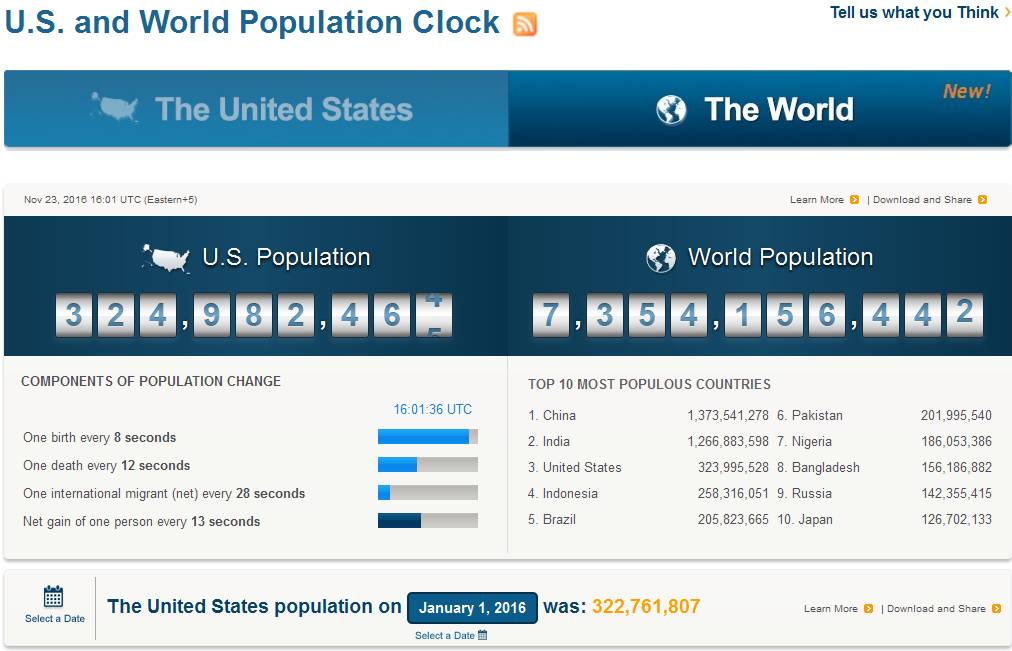
An official website of the United States government
Here’s how you know
Official websites use .gov
A .gov website belongs to an official government organization in the United States.
Secure .gov websites use HTTPS
A lock (
) or https:// means you’ve safely connected to the .gov website. Share sensitive information only on official, secure websites.
-
//
- Census.gov /
- Newsroom /
- Stats for Stories /
- U.S. Population Clock Hits 325 Million
Stats for Stories: U.S. Population Clock Hits 325 Million
Key Stats:
We expect the U.S. population to reach 325 million around 6:13 a.m. EDT on May 7, 2017, according to the Census Bureau’s Vintage 2016 Population Estimates.
About the Population Clock and Population Estimates
U.S. Population
The U.S. population clock is based on a series of short-term projections for the resident population of the United States. This includes people whose usual residence is in the 50 states and the District of Columbia. These projections do not include members of the Armed Forces overseas, their dependents, or other U.S. citizens residing outside the United States.
The projections are based on a monthly series of population estimates starting with the April 1, 2010 resident population from the 2010 Census.
At the end of each year, a new series of population estimates, from the census date forward, is used to revise the postcensal estimates, including the population clock projections series. Once a series of monthly projections is completed, the daily population clock numbers are derived by interpolation. Within each calendar month, the daily numerical population change is assumed to be constant, subject to negligible differences caused by rounding.
Population estimates produced by the U.S. Census Bureau for the United States, states, counties, and cities or towns can be found on the Population Estimates web page. Future projections for the United States and states can be found on the Population Projections web page.
More Stats:
The Census Bureau's Population Estimates Program produces estimates of the population for the United States, its states, counties, cities and towns, as well as for the Commonwealth of Puerto Rico and its municipios. Demographic components of population change (births, deaths, and migration) and demographic characteristics (age, sex, race, and Hispanic origin) are produced at the national, state, county, Puerto Rico Commonwealth and muncipio levels of geography. In addition, housing unit estimates are produced for the nation, states, and counties.
The U.S. Census Bureau is the leading source of statistical information about the nation’s people. Our population statistics come from decennial censuses, which count the entire U.S. population every ten years, along with several other surveys.
Stats for Stories: World Population Day, July 11, 2016
From the Newsroom:
Share
You May Be Interested In
Facts for Features & Special Editions
Facts for Features
Facts for Features consist of collections of statistics from the Census Bureau's demographic and economic subject areas.
Facts for Features
Facts for Features consist of collections of statistics from the Census Bureau's demographic and economic subject areas.
 Yes
Yes
 No
NoComments or suggestions?


Top


